
| Самолеты (сортировка по:) | |||||
| Страна | Конструктор | Название | Год | Фото | Текст |
Phonix 20.14 / 20.16

|
Страна: Австро-Венгрия Год: 1917
Fighter |
| Phonix - 20.10 / 20.11 / 20.12 - 1916 - Австро-Венгрия | <– | –> | Phonix - C.I - 1917 - Австро-Венгрия |
 |
C.Owers - Hansa-Brandenburg Aircraft of WWI. Volume 3 - Monoplane Seaplanes /Centennial Perspective/ (19) |
| The first Austrian war-product Scout - The Brandenburg K Model and K.B. built by the Phonix Co. |
 |
P.Grosz, G.Haddow, P.Shiemer - Austro-Hungarian Army Aircraft of World War One /Flying Machines/ |
| The modified Brandenburg D.I(Ph) 28.48 (later 20.14) with the “Nieuport wing cellule” designed by Kirste, photographed when it was rolled out in December 1916. |
 |
P.Grosz, G.Haddow, P.Shiemer - Austro-Hungarian Army Aircraft of World War One /Flying Machines/ |
| The Phonix-built 28.48 prototype is fitted with a sesquiplane format wing cellule with a Vee strut and additional diagonal bracing struts. A standard Series 28 fuselage was modified with it filling the wing gap with the upper wing mounted atop the fuselage. The upper wing also mirrored the planform of the Nieuport (11,16, and 17) top wing. The aircraft exhibited greater speed and climb than the standard Series 28 fighter. It was damaged in a landing accident prior to undergoing formal tests and was rebuilt with a lengthened fuselage as prototype 20.14. The simplicity of the sesquiplane layout and the absence of wire bracing is evident in this view of the modified 28.48. For flight tests armament was not installed. |
 |
W.Green, G.Swanborough - The Complete Book of Fighters |
| The sole example of the Phonix 20.14 which was completed in December 1916. |
 |
E.Hauke, W.Schroeder, B.Totschinger - Die Flugzeuge der k.u.k. Luftfahrtruppe und Seeflieger 1914-1918 |
| Brandenburg 20.14 (Nieuport-Zelle) |
 |
P.Grosz, G.Haddow, P.Shiemer - Austro-Hungarian Army Aircraft of World War One /Flying Machines/ |
| A rear quarter view of the 20.14 prototype showing it still had the Nieuport-style upper wing, modified lower vee-strut wing arrangement, and the diagonal bracing strut. The fuselage was lengthened following the crash of the 28.48. Although an improvement on the production Brandenburg D.I, the 20.14 could not match the superior performance of the Phonix 20.15 prototype and was not developed further. |
 |
P.Grosz, G.Haddow, P.Shiemer - Austro-Hungarian Army Aircraft of World War One /Flying Machines/ |
| Port side view of the 20.14 that succeeded the 28.48. A vertical fin has now been added to give the 20.14 greater directional stability than the standard Brandenburg D.I and 28.48 prototype. The Phonix 20.14 (ex 28.48) was fitted with a longer fuselage, new tail, and washed-out ailerons. |
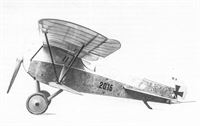 |
C.Owers - Hansa-Brandenburg Aircraft of WWI. Volume 3 - Monoplane Seaplanes /Centennial Perspective/ (19) |
| In its original version, the Phonix 20.16 represented the final attempt to perfect the sesquiplane wing that, although lighter in weight, lacked the robustness required by a high-performance fighter. |
 |
C.Owers - Hansa-Brandenburg Aircraft of WWI. Volume 3 - Monoplane Seaplanes /Centennial Perspective/ (19) |
| The 20.16 prototype was a further development of the 20.14 design with sesquiplane wing cellule. The new upper wing had rounded wingtips, tapered trailing edges at the ailerons, and incorporated washout so the ailerons would not stall before the inboard section of the wings. If the ailerons stall first, the pilot loses roll control ata critical moment and the aircraft can easily enter a spin before the pilot can recover from the stall. |
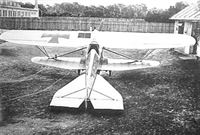 |
C.Owers - Hansa-Brandenburg Aircraft of WWI. Volume 3 - Monoplane Seaplanes /Centennial Perspective/ (19) |
 |
C.Owers - Hansa-Brandenburg Aircraft of WWI. Volume 3 - Monoplane Seaplanes /Centennial Perspective/ (19) |
| The 20.16 prototype shows its new upper wing and tailplane design. Unlike the earlier 20.14, the upper wing planform now resembles that of the lower wing. The radiator was installed in the inboard section of the port upper wing and the VK gun canister has been eliminated; synchronized guns would be used from now on. The vertical fin added to the 20.14 prototype has been retained for directional stability. |
 |
W.Green, G.Swanborough - The Complete Book of Fighters |
| After tests in June 1917, the Phonix 20.16 was rebuilt with an entirely new wing cellule. |
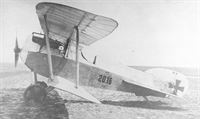 |
P.Grosz, G.Haddow, P.Shiemer - Austro-Hungarian Army Aircraft of World War One /Flying Machines/ |
| The Phonix 20.16 (second version), fitted with an improved Sparmann wing cellule, was considered the true prototype of the Phonix D.I. During initial tests in July 1917, it was flown unarmed. |
 |
C.Owers - Hansa-Brandenburg Aircraft of WWI. Volume 3 - Monoplane Seaplanes /Centennial Perspective/ (19) |
| Phonix D.I-prototyp, 20.16 |
 |
Форум - Breguet's Aircraft Challenge /WWW/ |
| The Austro-hungarian experimental Phonix 20.16 in its second version. The first version of this experimental had a sesquiplane and a completely filled fuselage to the upper wing, resulting that the pilot could see nothing straight ahead. He could look possibly over the upper wing a little bit, judging from pictures. What we see here is the second version of the 20.16 which can be distinguished by its equal wings and the radiator on the leading edge of the top wing. There was also romm between the top wing and the fuselage to look straight ahead. This experimental was judged ripe for production in August 1917, to become the Phonix D.I production fighter. |
 |
E.Hauke, W.Schroeder, B.Totschinger - Die Flugzeuge der k.u.k. Luftfahrtruppe und Seeflieger 1914-1918 |
| The Phonix 20.16 (second version). To provide more efficient cooling, the airfoil radiator has been replaced by a leading edge radiator. Assigned to the Flars weapons test group in April 1918, the 20.16 was used for testing electrical aiming sights through October 1918. |
 |
C.Owers - Hansa-Brandenburg Aircraft of WWI. Volume 3 - Monoplane Seaplanes /Centennial Perspective/ (19) |
| The re-designed Phonix 20.16 prototype with its revised, conventional wing cellule by Edmund Sparmann. Upper and lower wingtips were rounded. This was a stronger wing cellule that improved on the similar wing on the 20.15 prototype. Testing revealed good performance and flying qualities, and the production Phonix D.I fighter was based on this version of the 20.16. The radiator for the 200-hp Daimler was now located above the upper wing, a position that ensured adequate cooling at the expense of higher drag. |
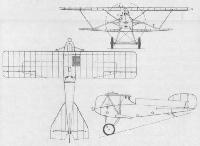 |
W.Green, G.Swanborough - The Complete Book of Fighters |
| The sole example of the Phonix 20.14 which was completed in December 1916. |
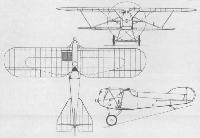 |
W.Green, G.Swanborough - The Complete Book of Fighters |
| The Phonix 20.16 is illustrated here in its original sesquiplane configuration. |
 |
P.Grosz, G.Haddow, P.Shiemer - Austro-Hungarian Army Aircraft of World War One /Flying Machines/ |
| Brandenburg D.I(Ph) 28.48 (modified) |
 |
P.Grosz, G.Haddow, P.Shiemer - Austro-Hungarian Army Aircraft of World War One /Flying Machines/ |
| Phonix 20.14 |
 |
P.Grosz, G.Haddow, P.Shiemer - Austro-Hungarian Army Aircraft of World War One /Flying Machines/ |
| Phonix 20.16 |